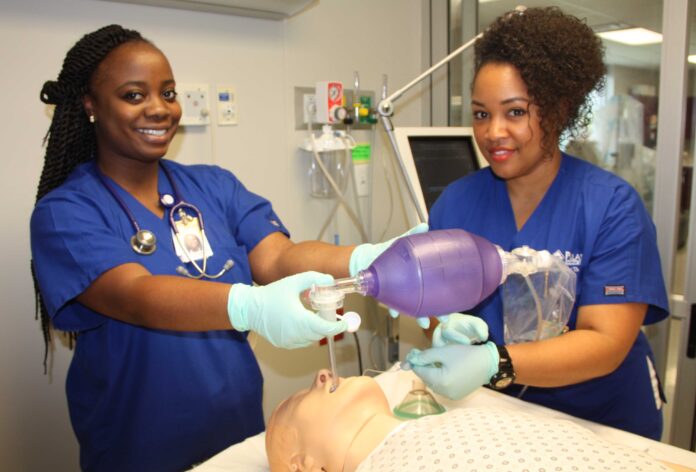Many doctors and surgeons have already been — or are going to be — repurposed to take care of covid-19 patients as hospitals get overwhelmed. For some of us, this will mean treating conditions that we haven’t dealt with since medical school. And this might include putting breathing tubes into patients and using ventilators, which few doctors do routinely.
Sure, many of us have broad enough experience that we can safely do the procedure. But as hospitals surge with patients experiencing coronavirus-related respiratory illness, one group of front-line workers is absolutely essential in managing these patients and running ventilators: respiratory therapists. These front-line workers are truly the unsung heroes in this battle. Not only do they run the machines, but in many instances, they also have more close contact with covid-19 patients than anyone else in the hospital — which means they’re putting themselves in more danger.
My first encounter with a respiratory therapist was as a surgery resident managing a busy critical-care unit in the middle of the night. I was paged overhead. “Dr. Sathya, please report immediately to patient X’s room for respiratory distress.” I ran over and saw the patient was gasping for air. It was obvious the patient needed to be intubated with a breathing tube and quickly placed on a ventilator. I had done this before as a medical student but had no idea where to start.
That’s when I saw the respiratory therapist, who arrived within seconds and had already prepared the equipment, drugs and ventilator needed. I thought to myself, “All I have to do is put the tube into the patient’s airway.” But I was sweating bullets. The respiratory therapist kept me calm and told me exactly what to do. The breathing tube slid nicely into the patient’s airway. The respiratory therapist hooked the patient up to the ventilator and single-handedly worked the machine over the next week, making sure it safely pushed air into the patient’s lungs and maintained proper oxygen levels.
This was one of many times a respiratory therapist saved the day throughout my career. They serve as the glue that brings everything together when we doctors manage patients with respiratory illnesses. They’re often the first to be called by nurses when a patient is having trouble breathing. They know more about oxygen, breathing support and ventilators than most others in the hospital. They work complex machines, suction secretions from the airway, take patients off the ventilators and, in many hospitals, they even position the breathing tube in the first place or teach trainees how to do so.
As we battle this pandemic, the importance of respiratory therapists has never been more apparent. Yet most people outside hospital settings don’t even know the job exists. “Medical shows [on TV] often show respiratory procedures but never show or mention respiratory therapists, who are critical,” said Tom Kallstrom, executive director and chief executive of the American Association for Respiratory Care and a respiratory therapist himself. “We are right in patients’ faces every day, suctioning up their secretions, inserting and removing breathing tubes, and much more.” Being so close to the patients means a higher risk of contact with secretions, which may contain viruses, Kallstrom said.
Since many hospitals are understaffed with respiratory therapists — typically, a single therapist is responsible for many patients — they’re probably going into more covid-19 patient rooms than almost anyone else. Managing ventilators is labor-intensive, so they often have to spend a long time in each room. This all adds up to an elevated exposure risk.
“Patients on ventilators needs a lot of support,” said Brady Scott, a respiratory therapist at Rush University Medical Center in Chicago. “We have to constantly make sure they are breathing safely on the device. We try to mitigate as much as possible, with [personal protective equipment] and avoiding the room when possible, but being in the room to work the breathing equipment is a big part of our job.”
Managing a ventilator is much more than turning knobs; it’s a complicated process. You have to know exactly how to interpret and understand the feedback the ventilator is providing, adjust as needed, make sure the equipment is working and ensure the patient is getting the right amount of oxygen without damaging the lungs from too much pressure, Scott said.
Your elective surgery will be canceled. It’s for everyone’s good.
As the virus ravages our hospitals, every worker — whether cleaning staff, nurses, physician assistants, cafeteria employees, social workers, security personnel or others — is invaluable in this fight. Each makes a vital contribution, without which hospitals wouldn’t be able to function. As we brace for the eventual peak of the pandemic and an overwhelming number of patients needing ventilators, respiratory therapists — whom we can’t run all the ventilators without — will be front and center. “I am scared to death that despite my best efforts and PPE, I can still bring the virus home to my family,” Scott said. “I have a 4-year-old daughter. But patients need us, so without a question, I put on PPE and go back into battle every day.”
Summary:




